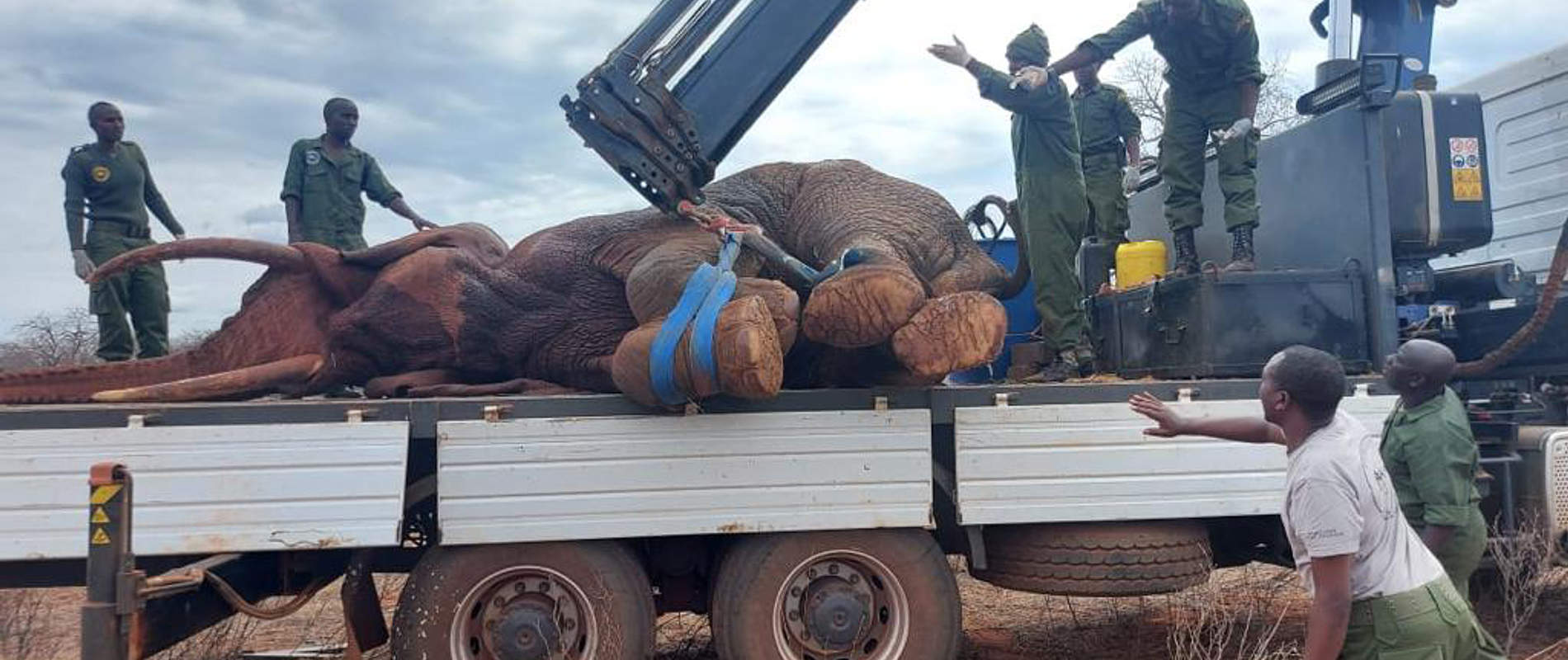
Handling and Relocating a Male ElephantOut in the wild, events tend to unravel gradually. This was particularly true when it came to managing a stunning male elephant.
On June 20th, our SWT/KWS Tsavo Mobile Vet Unit began the first chapter of an interesting tale. Our team was called to the aid of a wild animal that had suffered a deep wound on its ankle from a sharp object. It turned out that the animal had strayed into community lands adjacent to the Tsavo Conservation Area, and like many other wild animals outside the park, it had gotten involved in human-wildlife conflict. We were able to treat the wound successfully, and made plans to monitor the situation closely. We hoped that the animal would return to the safety of the park on its own, but we were ready to provide additional treatment or even relocate him if necessary.
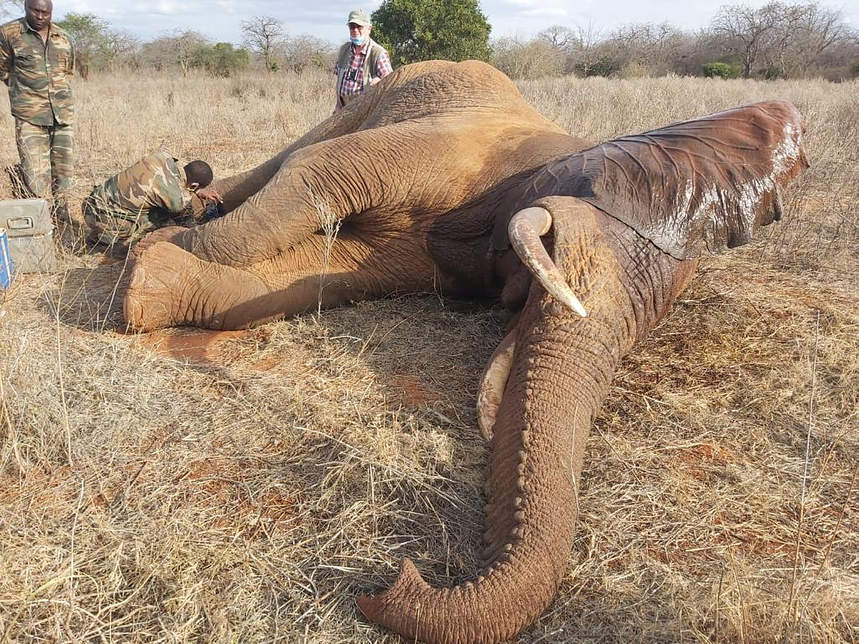
On June 20th, the bull received his first treatment. However, by July, he had become a prominent figure in the community, albeit a troublesome one. To address his wounds and move him back into Tsavo National Park, his follow-up treatment was scheduled for July 12th. We always allow at least two weeks between treatments requiring anesthesia to ensure the patient’s safety. Moving a full-grown elephant is no easy task, but the SWT helicopter darted the bull, and KWS and SWT ground teams gathered at the site. After the patient succumbed to anesthesia, the team cleaned and disinfected the wound on his foot before securing him with elephant straps and carefully lifting him onto the bed of our specially designed crane truck, avoiding his injured ankle. The truck has proved to be a game-changer in our operation and two KWS vets accompanied the bull to ensure his safety throughout the journey.
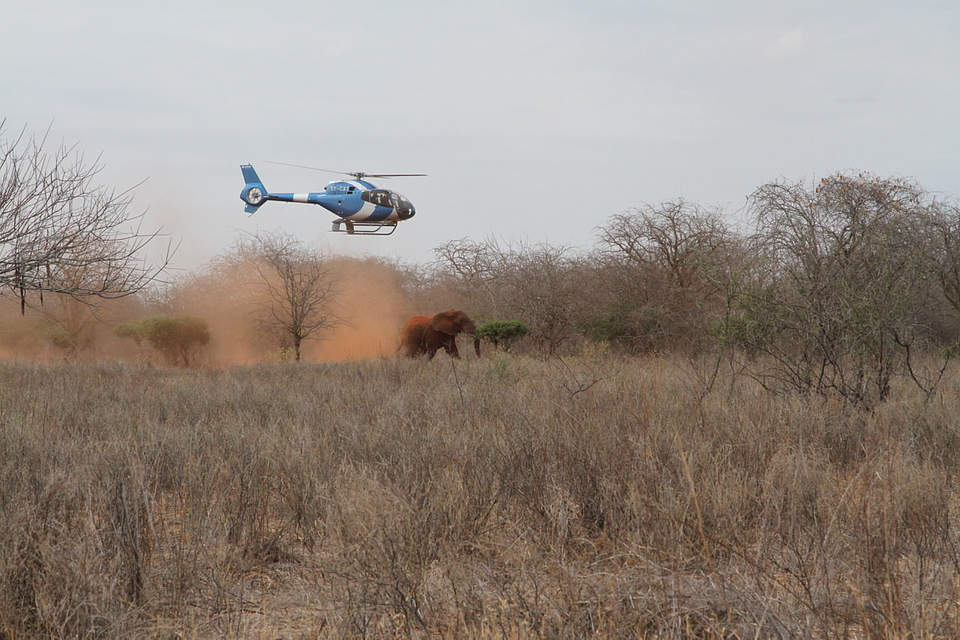
Dr. Poghon operates from the SWT helicopter, swiftly maneuvering to dart the majestic elephants.
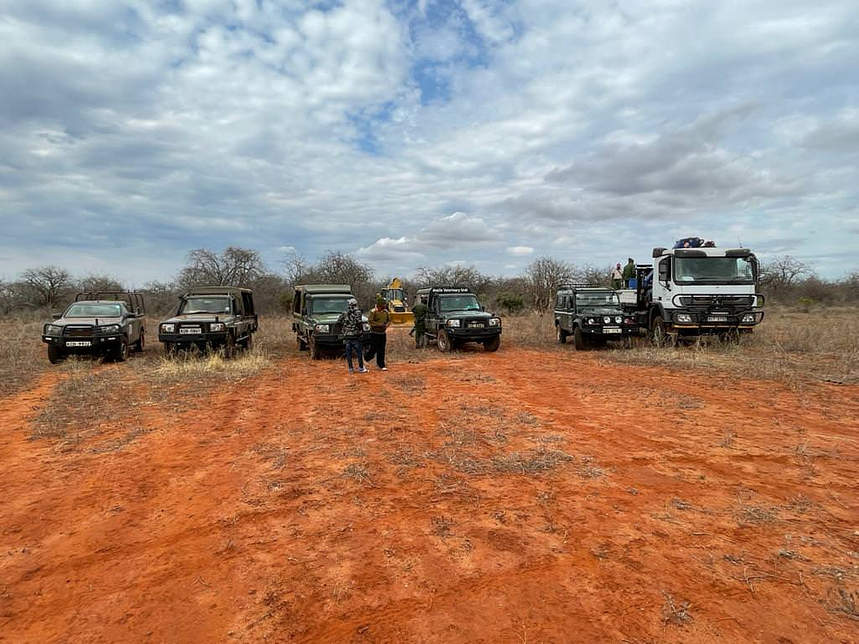
The teams on the ground are all set to take action as soon as the anaesthetic starts working. Even though the bull’s presence had caused unrest in the community, it was given a grand farewell party as it traveled down the road. The convoy caused quite a stir when it turned onto the Nairobi-Mombasa Highway, which runs through Tsavo East and Tsavo West National Parks. Finally, the convoy arrived at Tsavo West, where the elephant will be able to live in safety and peace in the vast protected wilderness.
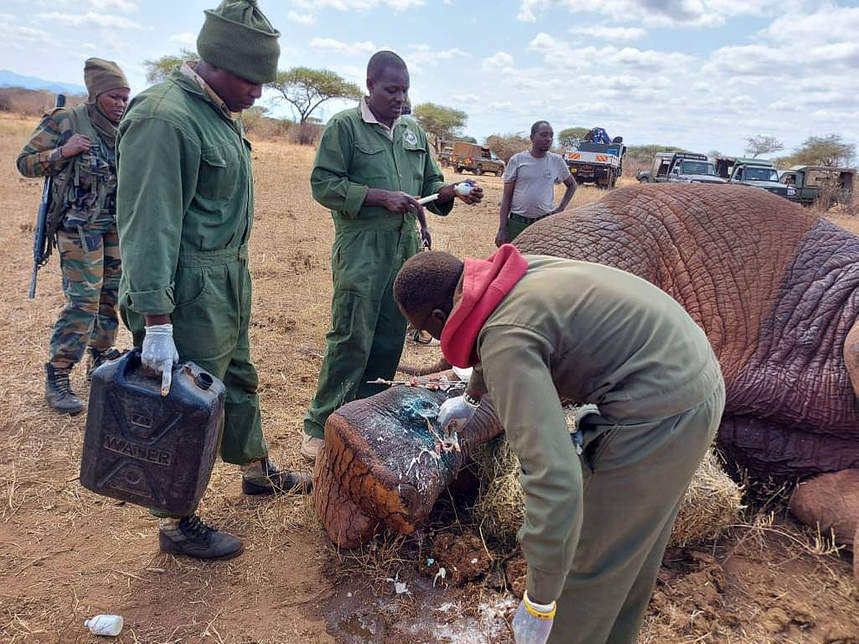
The veterinary team from SWT/KWS Tsavo evaluated and treated the injury.
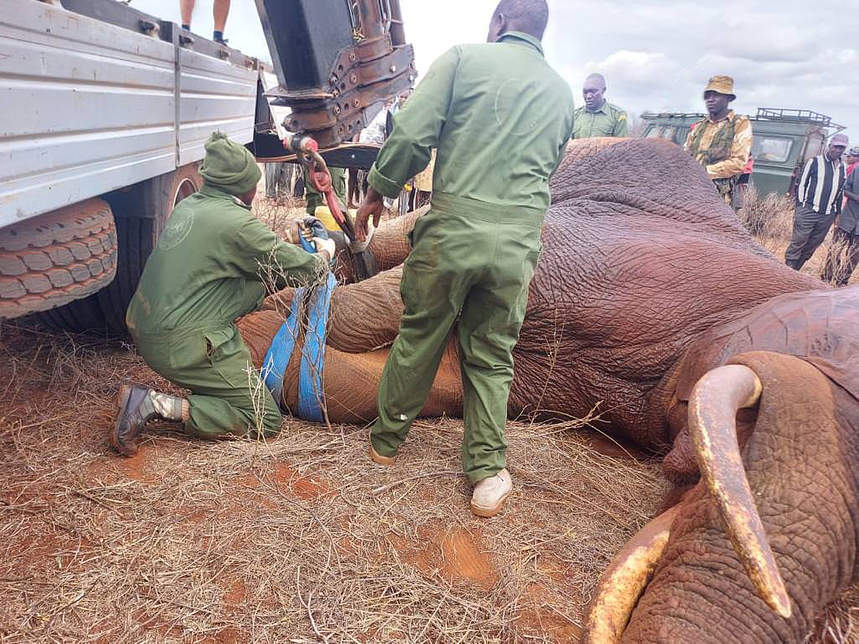
To transport patients safely, we rely on our expert elephant crane truck. As for the bull elephant, we set him free in a secure location near a waterhole that is popular with many other elephants. This spot is close to the base of our Mtito Anti-Poaching Team, so we can keep a close eye on him and provide him with additional food, such as lucerne. This means he won’t have to travel far to find nourishment. By choosing this specific location, we can ensure that he has everything he needs for a successful transition.
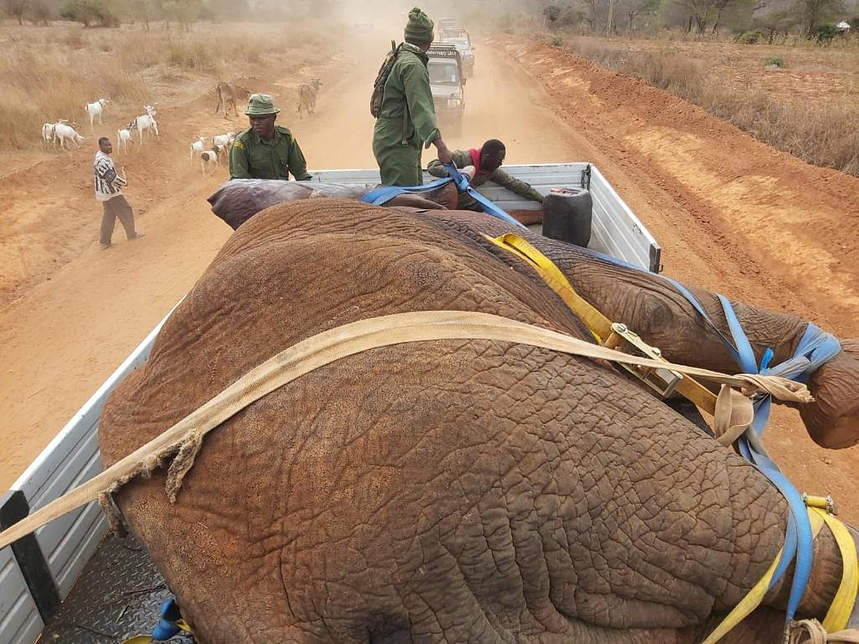
With a group of veterinarians present, the team securely boards its vehicle and departs from the community’s premises.
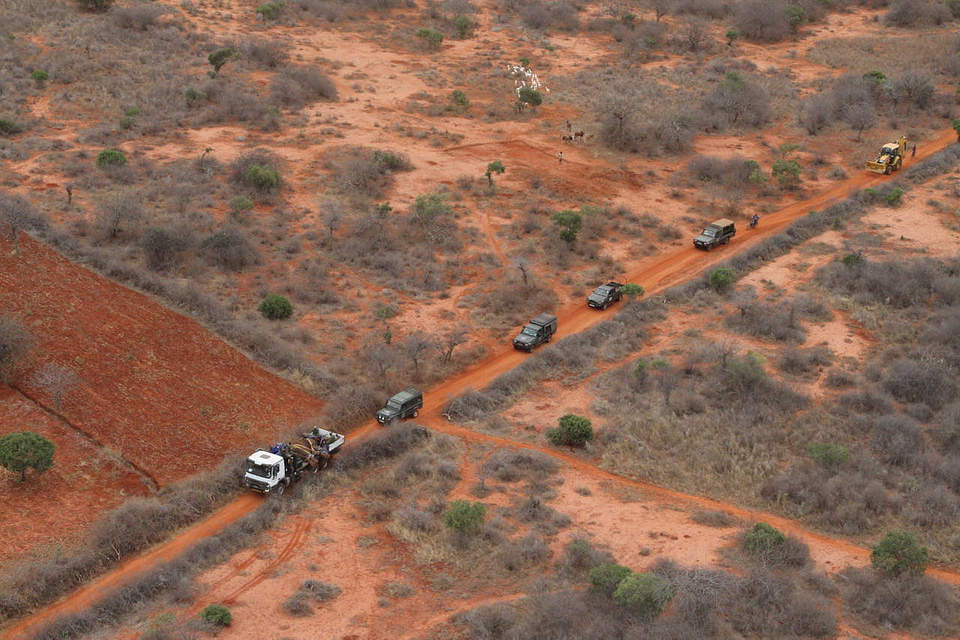
Once upon a time, there was an elephant who needed an escort to help him navigate through the jungle. The kind-hearted escort agreed to accompany the elephant on his journey.
As they made their way through the jungle, the elephant stopped to rest in a clearing. Suddenly, a group of monkeys appeared and started to taunt and tease the elephant.
Feeling overwhelmed and vulnerable, the elephant turned to his escort for help. Without hesitation, the escort chased away the monkeys and comforted the elephant.
Grateful for his escort’s bravery and friendship, the elephant continued on his journey with renewed confidence and strength. From that day forward, the two friends remained inseparable, traveling together through life’s ups and downs.
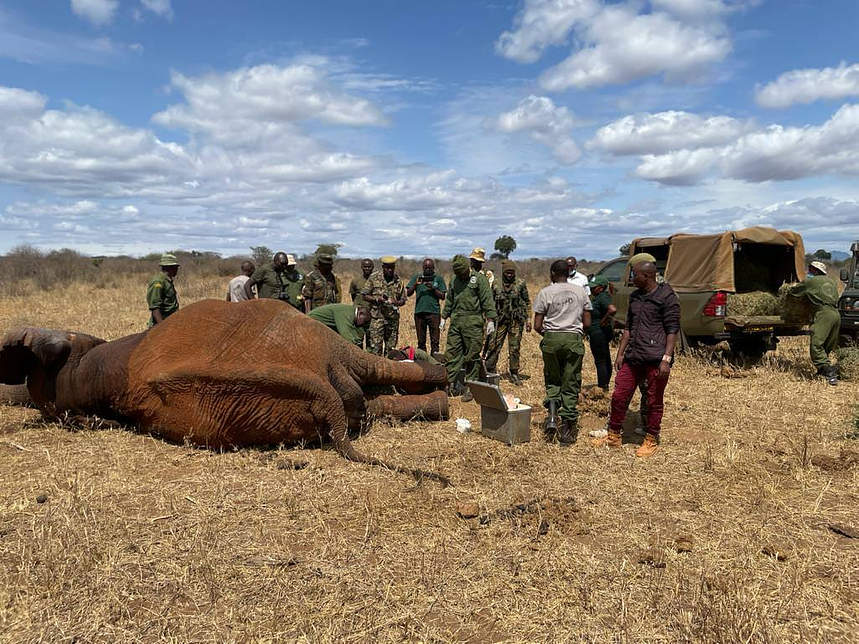
The patient is undergoing final checks before being revived following his translocation to Tsavo West National Park. This operation illustrates the crucial role of translocation in preserving wildlife and safeguarding the livelihoods of local communities. Due to the animal’s location in a densely populated area, using a helicopter to relocate him was not feasible. Translocation is therefore a vital tool when it comes to situations like this, as it can be the determining factor between life and death. Our organization has worked closely with the Kenya Wildlife Service (KWS) to establish a robust unit for these types of emergencies, and we are proud to offer a viable solution for complex human-wildlife conflict scenarios.